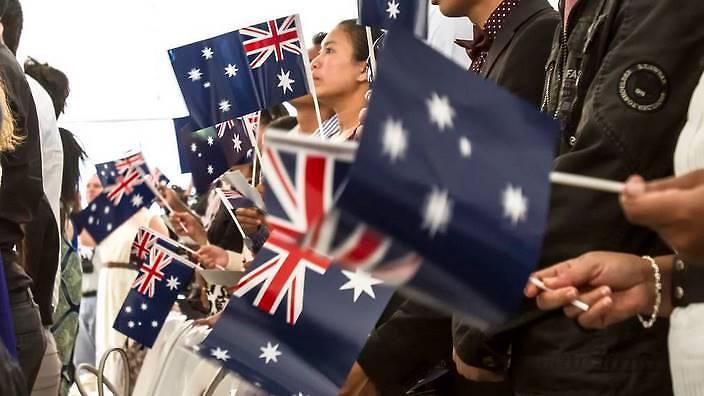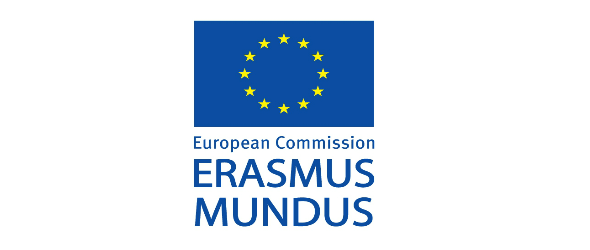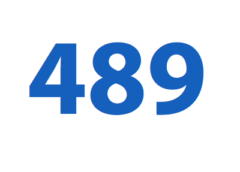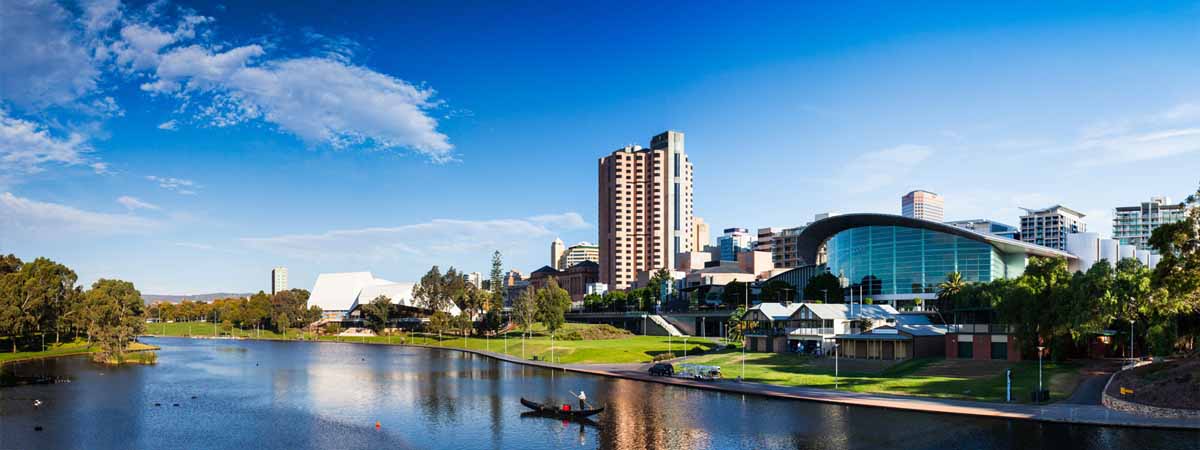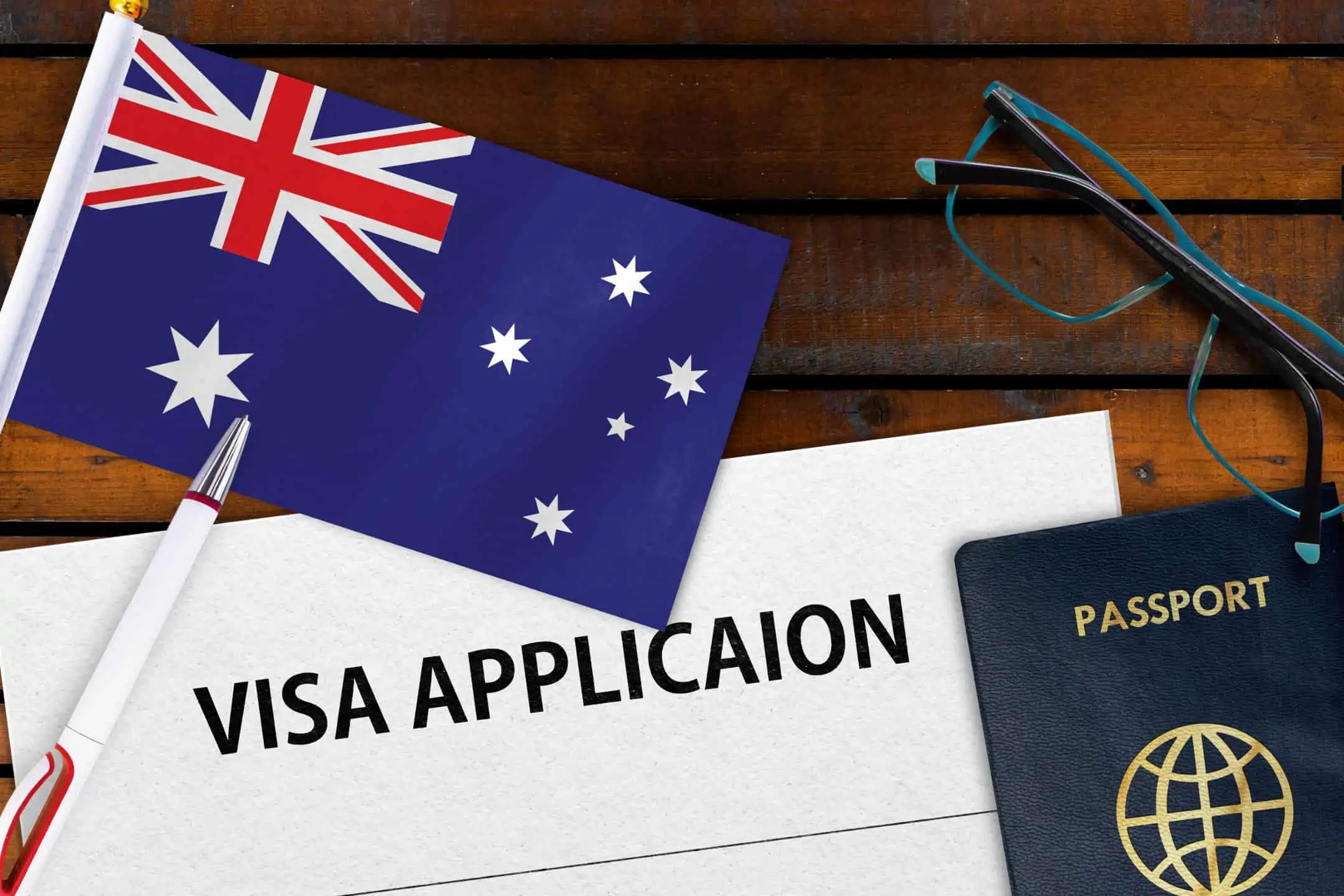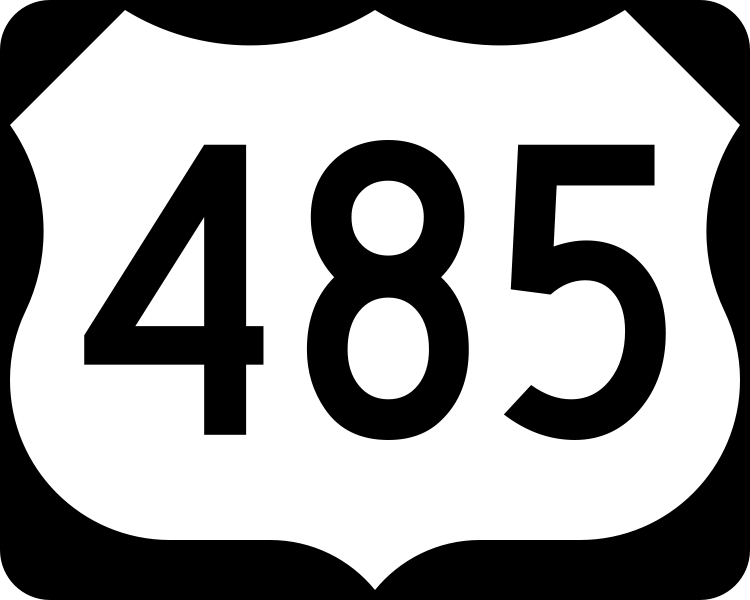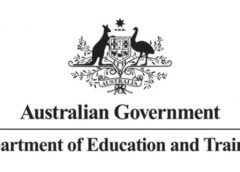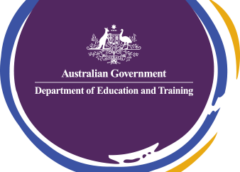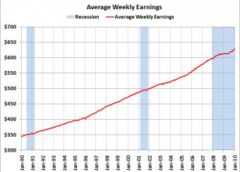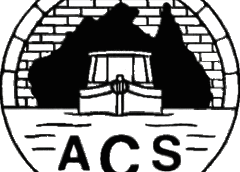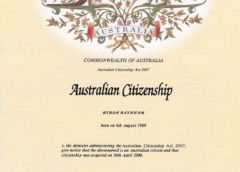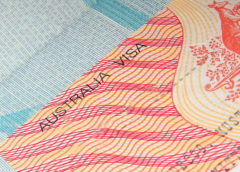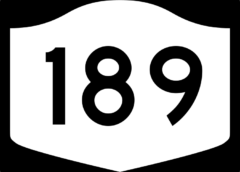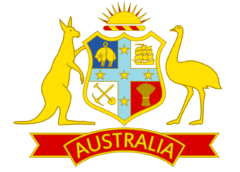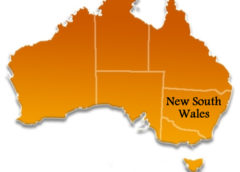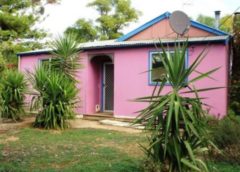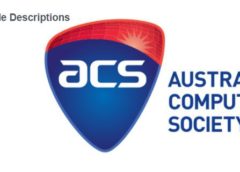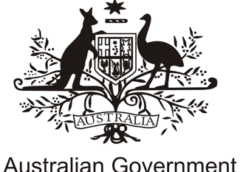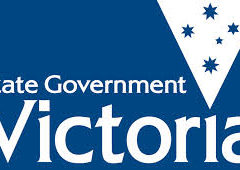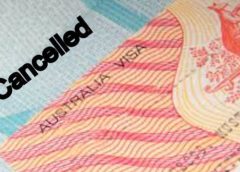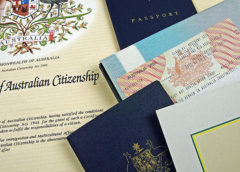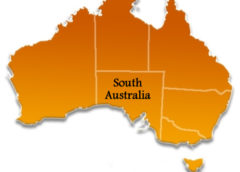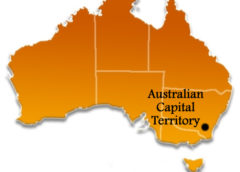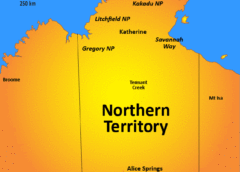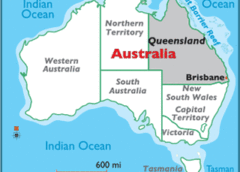Features
This visa allows skilled workers to live and work in specified regional areas in Australia for up to four years.
For the Invited Pathway – Submit an Expression of Interest.
For the Extended Stay Pathway – Apply for a Skilled Regional (Provisional) Renewal (subclass 489) visa.
For family members of someone who already holds a subclass 489, 475, 487, 495 or 496 – Apply for a Skilled Regional (Provisional) Subsequent Entrant (subclass 489) visa.
Requirements
Invited Pathway
You might be eligible to apply for this visa if invited. When we sent your letter of invitation, you must also have:
- been nominated by an Australian State or Territory government agency or sponsored by an eligible relative living in a designated area
- nominated an occupation that is on the relevant skilled occupations list
- a suitable skills assessment for that occupation
- not yet turned 50 years of age
- achieved the score specified in your letter of invitation based on the factors in the points test
- at least competent English
Extended Stay Pathway
You can also apply for this visa if you hold a provisional visa in subclass 496, 495, 487 or 475.
Submit an expression of interest
The Skilled-Regional (Provisional) visa (subclass 489) is for skilled workers and their families to live, work and study in specified regional areas in Australia for four years.
There are two pathways for this visa:
- the Invited Pathway
- the Extended Stay Pathway – you must hold a provisional visa in subclass 475, 487, 495 or 496.
For members of your family unit who are included in your visa application (in either visa pathways), they must be a member of the family unit of someone who already holds this visa (subclass 489) or a provisional visa in subclass 475, 487, 495 or 496.
More information
More information is available from Workers.
Invited Pathway
You might be eligible to apply for this visa if invited and you are either:
- nominated by an Australian State or Territory government agency, or
- sponsored by an eligible relative living in a Designated area of Australia.
When we sent your letter of invitation, you must also have:
- been nominated by an Australian State or Territory government agency or sponsored by an eligible relative living in a designated area
- nominated an occupation that is on the relevant skilled occupation list
- a suitable skills assessment for that occupation,
- not yet turned 50 years of age
- achieved the score specified in your letter of invitation based on the factors in the points test
- at least competent English.
Your invitation is based on the claims made in your expression of interest. Your application must achieve at least the score specified in your invitation to apply when assessed against the points test.
Extended Stay Pathway
You might be eligible to apply for the Extended Stay Pathway if you are the skilled worker who has held one of the following visas and complied with all visa conditions, for at least two years before applying for this visa:
- provisional Skilled—Independent Regional visa (subclass 495)
- provisional Skilled—Designated Area Sponsored Provisional visa (subclass 496)
- provisional Skilled—Regional Sponsored visa (subclass 475)
- provisional Skilled—Regional Sponsored visa (subclass 487).
You must have never held more than one of the above visas.
What this visa lets you do
This visa allows you and your family to:
- stay in Australia for up to four years
- live, work and study in a specified regional area of Australia
- travel in and out of Australia while the visa is valid.
This visa provides a pathway to permanent residence through the Skilled-Regional (Residence) visa (subclass 887).
Before you apply
To be able to apply for this visa, you must first submit an expression of interest and then be invited through SkillSelect. If you receive an invitation, you will have 60 days to apply online for the visa. During that time, you cannot change the information in your expression of interest.
To submit a complete expression of interest, you must have competent English language skills and a positive skills assessment for your nominated occupation (or Job Ready program, if applicable).
Your visa application is likely to require extensive supporting documents, as listed in the document checklist. Start compiling your documents early in the process, even before you submit your expression of interest.
Your passport
If you are younger than 18 and want to change your welfare arrangements, you must:
- have written approval from either your parents, legal guardian or education provider
- inform us within seven days if your welfare arrangements change after this visa is granted.
If your welfare provider changes from your education provider to a relative, you must complete:
-
 Form 157N Nomination of a student guardian (171 kB PDF).
Form 157N Nomination of a student guardian (171 kB PDF).
You might be able to update your passport details using ImmiAccount.
Nomination by a State or Territory government
State and Territory government agencies can view your expression of interest in SkillSelect and decide whether to nominate you for a visa. Each state or territory has a list of occupations that guides the types of skills they are looking for.
In your expression of interest, you can indicate your interest in just one State or Territory, or you can choose to be available to all States and Territories. If you accept a nomination, the States and Territories might require you to:
- live in the nominating State or Territory for at least two years
- tell the State or Territory your address, both before and after you arrive in Australia
- be prepared to complete surveys and provide information they ask for
- meet any other requirements.
Each State or Territory government agency has its own process for nominating expressions of interest, some agencies contact people directly, and others wait for people to contact them. You can find more information on their websites:
- Australian Capital Territory: Migrating to Canberra
- New South Wales: Live and work in NSW
- Northern Territory: Pathways through business and skill migrations
- Queensland: Business and Skilled Migration Queensland
- South Australia: Immigration South Australia
- Tasmania: Migrating to Tasmania
- Victoria: Live in Victoria
- Western Australia: Live in Western Australia.
Cost
You do not need to provide a police certificate from your home country.
You must pay a second instalment of the visa application charge for each applicant who:
- is aged 18 years or older at the time of application
- is assessed as not having functional English and
- has not paid for a second instalment of the visa application charge in relation to an application for a subclass 495, 496, 475 or 487 visa.
The charge must be paid before a visa can be granted. How can I prove I have functional English explains how you can demonstrate your language ability.
Other costs
While you are in Australia, you must be able to support yourself and members of your family unit who come with you to Australia. You might be asked to provide evidence of funds, such as an employment contract, bank statements or a letter from your financial institution stating your financial position. Allowances, accommodation and other assistance from your employer can also be considered when looking at your ability to support yourself.
Submit an expression of interest
This information tells you whether you might be eligible to apply for a Skilled-Regional (Provisional) visa (subclass 489).
If you are invited to apply for this visa (in the Invited Pathway), you will have 60 days to do so. Invitations are based on claims you made in your expression of interest, so your application must be consistent with the information you provided in your expression of interest and it must be supported by evidence.
Visa Applicants
Who could get this visa
For you to apply for this visa, one of the following must apply to you:
- Invited Pathway – you have submitted an expression of interest and you were invited to apply as a skilled worker for this visa
- Extended Stay Pathway – you have held a provisional visa in subclass 475, 487, 495 or 496 for at least two years and want to extend your stay in Australia
- You are a member of the family unit of someone who holds this visa (subclass 489) or a provisional visa in subclass 475, 487, 495 or 496.
You and members of your family unit must also meet Australia’s health and character requirements.
Health requirements
You must meet certain health requirements. The health examinations you need will depend on your personal circumstances, including your country of citizenship, time spent in another country during the last five years and your intended activities in Australia. The results of your health examinations are generally valid for 12 months.
This applies to you and any member of your family unit listed in your application, whether they are migrating or not.
You are able to organise your health examinations upfront before lodging a visa application.
Character requirements
You must meet certain character requirements. You must be prepared to provide a police certificate from each country you have lived in for 12 months or more during the past 10 years after you turned 16 years of age. Do not arrange for police certificates until we ask you to.
This applies to you and all members of your family unit listed in your application, whether they are migrating or not.
Debts to the Australian Government
You must have no outstanding debts to the Australian Government or have arranged to repay any outstanding debts to the Australian Government before this visa can be granted.
Provide biometrics
You might be asked to provide biometrics (a scientific form of identification) as part of the application. Countries and visa subclasses included in the biometrics program has more information.
Sign the Australian values statement
If you are older than 18 years of age, you must sign an Australian Values Statement to confirm that you will respect the Australian way of life and obey Australian laws. The statement is included in the visa application form. You must have read, or had explained to you, the Life in Australia book before you sign the statement.
Specified regional areas of Australia
Regional and low population-growth metropolitan areas
If nominated for this visa by a State or Territory government agency, you are to live, work and study in an area listed by postcode in the following table.
Regional and low population growth metropolitan areas
| Regional and low population growth metropolitan areas | Postcodes |
|---|---|
| New South Wales (NSW)
Anywhere except Sydney, Newcastle, the Central Coast and Wollongong |
2311 to 2312, 2328 to 2411, 2420 to 2490, 2536 to 2551, 2575 to 2594, 2618 to 2739, 2787 to 2898 |
| Northern Territory | Entire territory |
| Queensland
Anywhere except the greater Brisbane area and the Gold Coast |
4124 to 4125, 4133, 4211, 4270 to 4272, 4275, 4280, 4285, 4287, 4307 to 4499, 4515, 4517 to 4519, 4522 to 4899 |
| South Australia | Entire state |
| Tasmania | Entire state |
| Victoria
Anywhere except the Melbourne metropolitan area |
3211 to 3334, 3340 to 3424, 3430 to 3649, 3658 to 3749, 3753, 3756, 3758, 3762, 3764, 3778 to 3781, 3783, 3797, 3799, 3810 to 3909, 3921 to 3925, 3945 to 3974, 3979, 3981 to 3996 |
| Western Australia
Anywhere except Perth and surrounding areas |
6041 to 6044, 6083 to 6084, 6121 to 6126,6200 to 6799 |
Designated areas of Australia
If you are sponsored by an eligible relative, you are to live, work and study in one of the following designated areas of Australia.
Designated areas of Australia
| State or territory | Designated area |
| Australian Capital Territory (ACT) | Entire territory |
| New South Wales (NSW)
(except Sydney, Newcastle and Wollongong) |
2311 to 2312, 2328 to 2333, 2336 to 2490, 2535 to 2551, 2575 to 2739, 2787 to 2898 |
| Northern Territory | Entire territory |
| Queensland
(anywhere outside the Brisbane metropolitan area) |
4019 to 4028, 4037 to 4050, 4079 to 4100, 4114, 4118, 4124 to 4150, 4158 to 4168, 4180 to 4899 |
| South Australia | Entire state |
| Tasmania | Entire state |
| Victoria | Entire state |
| Western Australia | Entire state |
Including family in your application
You can include the following people in your visa application at the time of lodgement:
- your partner
- your child/step-child or your partner’s child/step-child.
For detailed information regarding who you can include in your application see including family members in your application.
The application must include documentary evidence of their relationship to you.
Members of your family unit must be able to show that they meet health and character requirements.
You can add a member of your famil unit yto your application at any time until your visa is decided.
Members of your family unit can also apply for this visa separately if you already hold either:
- this visa – the Skilled-Regional (Provisional) visa (subclass 489)
- a provisional visa in subclass 475, 487, 495 or 496.
How to apply
This information explains what you need to do to apply for a Skilled-Regional (Provisional) visa (subclass 489).
Prepare your documents
You need to provide documents to prove the claims you make in the application. The documents are listed in the Document checklist.
Some documents could take some time to obtain. You should have them ready when you lodge the application to reduce any delays in processing.
If you are invited to apply for this visa, you will have 60 days to apply. SkillSelect is occasionally unavailable due to maintenance. You should apply early to ensure successful lodgement. You can be in or outside Australia when you lodge your application.
Lodge your application online
You can apply for this visa as follows:
- For the Invited Pathway – Follow the instructions in your invitation.
- For the Extended Stay Pathway – Apply for a Skilled Regional (Provisional) Renewal (subclass 489) visa
- For members of the family unit of someone who already holds this visa or a visa in subclass 475, 487, 495 or 496 -apply using Application for Provisional Skilled Regional – Subsequent Entrant Visa (489).
You need to pay the initial visa application charge by credit card when you apply.
Upload your documents using your ImmiAccount when you lodge your online application. This will help reduce delays in processing the application.
If you cannot upload your documents, wait until your visa application is allocated to a case officer, who will ask you to provide any missing documents.
More information
Please refer to preparing your application, for information on:
- certifying and translating documents into English
- communicating with us
- using a migration agent
- authorising another person to receive information from us
- receiving assistance with your application.
After you have applied
After you have lodged your application and documents, we will acknowledge that we have received your information.
When we allocate your case for assessment, we will give you an email address for all future correspondence.
You can track and manage your application using ImmiAccount.
Wait for a decision
We have visa processing times for each visa.
Your application could take longer if you need character or health checks (including x-rays), if you need to provide more information, or if your application is incomplete.
Priority processing arrangements apply for this visa. These arrangements determine the order in which we consider applications, regardless of when the applications were lodged.
Outside Australia:
If you apply for this visa from outside Australia, do not make arrangements to travel to Australia until you are advised in writing that you have been granted a visa. Wait for a decision from us before you leave your job, sell your home or book your travel.
In Australia:
If you apply for this visa in Australia, you could be eligible for a Bridging visa that allows you to stay in the country lawfully while your application is processed. If you are given a Bridging visa A, you can apply for a Bridging visa B (BVB) to travel outside Australia while you wait for a decision.
If you have applied for this visa and a case officer has not told you that processing has begun, refer to Allocation dates for general skilled migration applications.
Provide more information
You can provide more information to us at any time until a decision is made on the application. If you want to correct information you provided, use:
We could also ask you for more information. You will have to respond by a set date. After that date, we can make a decision about your application using the information that we have.
You can provide additional information, including Form 1023, using ImmiAccount.
If another person gives us information that could result in you being refused a visa, we will usually give you the opportunity to comment on the information.
You might also be interviewed. If you are asked to attend an interview in person, bring your passport or other identification and any requested documents to the interview.
Report changes in circumstances
Tell us if your circumstances change. Please update your address and passport details using ImmiAccount.
If unable to use ImmiAccount, you can use the following forms:
-
 Form 929 – Change of address and/or passport details (86KB PDF) — if you move to a new address or change your passport
Form 929 – Change of address and/or passport details (86KB PDF) — if you move to a new address or change your passport -
 Form 1022 – Notification of changes in circumstances (77KB PDF) — if there are other changes in your circumstances.
Form 1022 – Notification of changes in circumstances (77KB PDF) — if there are other changes in your circumstances.
Withdrawing your application
You can withdraw the application at any time before we grant or refuse to grant the visa, using the following form:
Your request must include your full name and date of birth. You should also include the number we gave you when you applied, if you know it – this could be a file reference number, client ID, or a Transaction Reference Number.
You can withdraw the application at any time before we make a decision about it. To do this, send us a letter or email to ask for the withdrawal. Your request must include your full name and date of birth. You should also include your file reference number, client ID, or a Transaction Reference Number.
All applicants 18 years of age or older, wishing to withdraw, must sign the request for withdrawal.
Visa decision
If the visa is granted, we will let you know:
- when you can use the visa
- the visa grant number
- any conditions attached to the visa.
If the visa is not granted, we will let you know:
- why the visa was not granted
- your review rights (if any).
- the time limit for applying for review of the decision (if applicable).
Document checklist – Invited Pathway
You must provide documents to support your application for this visa.
Use the Subclass 489: document checklist – invited pathway to make sure your application is complete.
Document checklist – Extended Pathway
You must provide documents to support your application for this visa.
Use the Subclass 489: document checklist – extended stay pathway to make sure your application is complete.
Document checklist – Family member subsequent entrant
You must provide documents to support your application for this visa.
Use the Subclass 489: document checklist – subsequent family entrant to make sure your application is complete.
Contact information
If information needs to be updated, contact the Adelaide General Skilled Migration (GSM) processing centre.
Visa Holders
This information is for people who have already been granted a Skilled-Regional (Provisional) visa (subclass 489). It explains your rights and obligations.
You can use Visa Entitlement Verification Online (VEVO) for free to check your visa details and entitlements.
How long your visa lasts
Invited Pathway
Your visa is valid for four years from the date of grant.
Extended Stay Pathway
Your visa is valid for 4 years from the date you were granted the provisional visa in subclass 475, 487, 495 or 496.
If you applied for this visa as the member of the family unit of a holder of this visa (subclass 489) or a provisional visa in subclass 475, 487, 495 or 496, your visa is valid for the same period as the visa of that person.
What this visa lets you do
This visa allows you and your family to:
- stay in Australia for up to four years
- live, work and study in a specified regional area of Australia specified regional area of Australia
- travel in and out of Australia while the visa is valid.
This visa provides a pathway to permanent residence through the Skilled-Regional (Residence) visa (subclass 887).
Your obligations
You and your family must comply with all visa conditions and Australian laws.
If you were nominated for this visa by a State or Territory government
You must live, study and work in regional and low population-growth metropolitan area and comply with any residential conditions specified by the State or Territory government in your nomination.
If you later apply for a permanent residence Skilled-Regional visa (subclass 887), you will need to prove that you have spent the specified time in a regional and low population-growth metropolitan area.
If you were sponsored for this visa by a family member
You must live, study and work in a designated area. If you plan to apply for permanent residence Skilled-Regional visa (subclass 887), you will need to prove that you have spent the specified time in a designated area.
Report changes in circumstances
Tell us if your circumstances change. This includes a new residential address, a new passport, or a pregnancy, birth or death in your family.
You can use the following forms:
-
 Form 929 – Change of address and/or passport details (86KB PDF) — if you move to a new address or change your passport
Form 929 – Change of address and/or passport details (86KB PDF) — if you move to a new address or change your passport -
 Form 1022 – Notification of changes in circumstances (77KB PDF) — if there are other changes in your circumstances.
Form 1022 – Notification of changes in circumstances (77KB PDF) — if there are other changes in your circumstances.
Note:
Workers in Australia – including visa holders with permission to work – have rights under Australian workplace law.
The Fair Work Ombudsman’s Pay and Conditions Tool (PACT) provides information on pay rates, shift calculations, leave arrangements and notice and redundancy entitlements.
See also: Workplace rights for all visa holders working in Australia
Sponsors
This information is for a person who has agreed to sponsor a relative for a Skilled-Regional (Provisional) visa (subclass 489).
Who can be a sponsor
You can sponsor an eligible relative for this visa if:
- you are at least 18 years of age
- you live in a designated area of Australia
- you are an Australian citizen, an Australian permanent resident, or an eligible New Zealand citizen.
The relative or the relative’s partner you want to sponsor must be your:
- child or stepchild
- parent or step-parent
- brother, sister, adoptive brother, adoptive sister, stepbrother, step sister, niece, nephew, adoptive niece, adoptive nephew, step niece, step nephew, aunt, uncle, adoptive aunt, adoptive uncle
- grandparent or first cousin.
Your sponsor should provide certain documents as listed in the document checklist.
Sponsor declaration
To sponsor an applicant, you need to complete the following statutory declaration:
Give the completed form to the applicant so that they can include the form with their visa application.
Sponsor obligations
As a sponsor, you are agreeing to support the applicant and help them settle in Australia.
The points test invited pathway
You must score at least 60 points against points test factors to be eligible to be invited to apply for this visa.
If you are invited to apply, you must achieve at least the score specified in your letter of invitation.
This information tells you what you can be awarded points for. The evidence you need to provide is listed in the document checklist.
How points are awarded
Points are awarded on the basis of the factors listed in the following table. All factors are assessed as they are at the time you are invited to apply for this visa.
| Factor | Description | Points |
|---|---|---|
| Age | 18–24 years | 25 |
| 25–32 years | 30 | |
| 33–39 years | 25 | |
| 40–44 years | 15 | |
| 45–49 years | 0 | |
| English language ability
Test results must be no older than three years immediately before the day on which the visa application was made. |
Competent English | 0 |
| Proficient English | 10 | |
| Superior English | 20 | |
| Skilled employment
Only 20 points can be awarded for any combination of skilled employment in and outside Australia |
Outside Australia: skilled employment in your nominated skilled occupation or a closely related skilled occupation | |
|
5 | |
|
10 | |
|
15 | |
| In Australia: skilled employment in your nominated skilled occupation or a closely related skilled occupation | ||
|
5 | |
|
10 | |
|
15 | |
|
20 | |
| Qualifications | Doctorate from an Australian educational institution or other doctorate of a recognised standard | 20 |
| At least a bachelor degree from an Australian educational institution or other degree of a recognised standard | 15 | |
| Diploma or trade qualification completed in Australia | 10 | |
| An award or qualification recognised by the assessing authority in the assessment of the skilled occupation | 10 | |
| Australian study requirement | One or more degrees, diplomas or trade qualifications awarded by an Australian educational institution and meet the Australian study requirement | 5 |
| Specialist Education Qualification | Post Graduate Degree by Research through a course or courses taken for at least two academic years at an Australian educational institution | 5 |
| Other factors | Credentialled community language qualifications | 5 |
| Study in regional Australia or a low population growth metropolitan area (excluding distance education) | 5 | |
| Partner skill qualifications | 5 | |
| Professional year in Australia for at least 12 months in the four years before the day you were invited to apply | 5 | |
| Nomination/sponsorship (where required) | Nomination by state or territory government (visa subclass 190 only) | 5 |
| Nomination by state or territory government or sponsorship by an eligible family member to reside and work in a specified/designated area (visa subclass 489 only) | 10 |
Age
You can receive up to 30 points based on the age you were on the day you were invited to apply.
You must have been younger than 50 years of age when you were invited to apply for this visa.
English language ability
You must be able to demonstrate that you have at least competent English language ability at the time you are invited to apply and when you lodge your application.
No points are awarded for competent English.
You can receive 10 points for proficient English or 20 points for superior English.
The results of one of the following English language tests, undertaken not more than 36 months prior to the time you were invited to apply for this visa, can be used to evidence your English language ability:
- International English Language Testing System (IELTS)
- Occupational English Test (OET)
- Test of English as a Foreign Language internet-Based Test (TOEFL iBT)
- Pearson Test of English (PTE) Academic
Cambridge Advanced English (CAE) test results will only be considered if the test was undertaken on or after 1 January 2015. A CAE test undertaken before 1 January 2015 cannot be accepted.
IELTS has an academic test and a general training test. You need only take the general training test unless your assessing authority tells you otherwise. You are only required to provide the test report form (TRF) number or the test registration number that is on your English language test certificate.
Skilled employment
You can receive up to 20 points for skilled employment.
To claim points for skilled employment you must have, in the 10 years before you were invited to apply, at least 20 hours of paid work per week in your nominated skilled occupation and/or a closely related occupation.
Skilled employment is where:
- the relevant assessing authority provides an opinion in your suitable skills assessment that your employment is skilled (you must use the date that skilled employment commenced stated in your skills assessment)
- your employment experience meets the standards for skilled employment set by the relevant assessing authority on their website.
Assessing authorities that have publicly available standards on their website that we will refer to for assessing skilled employment are:
- The Australian Computing Society (ACS): Migration Skills Assessment – see ‘Summary of Criteria’
If the relevant assessing authority standards for assessing skilled employment does not have publicly available standards that we refer to, your employment experience must meet at least the minimum indicative skill level set by the Australian and New Zealand Standard Classification of Occupations (ANZSCO). This may apply to occupations which require registration as evidence of a suitable skills assessment.
What is a Closely Related Occupation?
Any periods of employment in a closely related occupation must be undertaken at the equivalent skill level of your nominated occupation. This means that any employment that you claim as ‘closely related’ to your nominated occupation should be:
- in the same ANZSCO Unit Group. For example, the occupations of Management Accountant and Taxation Accountant are in the same group, or
- consistent with a career advancement pathway. For example, Accountant to Chief Financial Officer, or
- where the relevant assessing authority has determined that the employment is closely related to the nominated occupation.
Working at least 20 hours a week
‘Working for at least 20 hours a week’ means 20 hours paid work each week. You may also meet this requirement where your employment provides for variable hours of work that extend beyond a week such as some shift workers and fly in fly out workers.
Qualifications
You can receive up to 20 points based on your educational qualifications at the time you were invited to apply.
Points can be awarded for your highest tertiary qualification. For example, if you have completed a Bachelor degree and a Doctorate degree, you can receive points for the Doctorate degree.
The relevant assessing authority for your nominated occupation can usually determine whether your qualifications are of a standard that is comparable to a relevant Australian qualification.
If the relevant assessing authority that conducts your skills assessment cannot give you an opinion about your qualifications, contact Vocational Education Training and Assessment Services.
Doctorate Degree
To receive 20 points for a Doctorate you must have met the requirements for an award of doctorate by an Australian educational institution or the award of a Doctorate, by another educational institution, that is comparable to a Doctorate at Australian standards.
A Doctorate generally comprises more than 4 years of study, involving extensive research, coursework, exams and the writing of a thesis/dissertation.
Bachelor Degree
To receive 15 points for having at least a Bachelor degree, you must have met the requirements for an award of Bachelor degree by an Australian educational institution or your qualification must be considered as at least comparable to a Bachelor level at Australian standards.
Note: To receive 15 points for a Masters degree, you must also have a Bachelor degree completed in Australia or overseas, or the Masters degree must be considered as at least comparable to Bachelor degree level at Australian standards.
Australian Diploma or Trade qualifications
You can receive 10 points for an Australian Diploma or Australian trade qualification.
Any other qualification
You can receive 10 points for any other qualification or award which is recognised as suitable for your nominated occupation in your skills assessment by the relevant assessing authority.
Australian study requirement
You can receive five points if you have completed one or more degrees, diplomas or trade qualifications for award through a course or courses taken at an Australian educational institution.
Your course or courses must:
- be registered through the Commonwealth Register of Institutions and Course for Overseas Students (CRICOS)
- have been completed in a total of at least 16 calendar months
- have been completed as a result of at least two academic years of study
- have given all instruction in English
- have been completed while you were physically in Australia
- have been completed while you held a visa authorising you to study in Australia.
A course can be counted only once towards the Australian study requirement. Any failed course subject cannot be counted.
As evidence that you completed the course or courses, you need to provide:
- a certified copy of a completion letter from your educational institution, including
- the dates the course began and ended
- the date the course requirements were met
- the location of the campus where you studied
- certified copies of course transcripts.
Two academic years of study is defined as 92 weeks of study in a course or courses registered by CRICOS. CRICOS determines a standard duration (number of weeks) for each course.
This is a measure of the amount of study you have completed, rather than of how long it took you to do it. The study does not have to be full time.
You can take longer to complete course work, but you will be credited with the number of weeks that CRICOS determines as a standard duration. For example, if it takes you 92 weeks to complete a course that CRICOS says should take 78 weeks, you will receive credit for 78 weeks only.
If you are given credit for prior learning, you could be exempt from taking a relevant course. An exempted course cannot be counted towards the Australian study requirement. Credit cannot be counted on the basis of study done either overseas or within Australia in a non-CRICOS registered course.
The 92 weeks of study could contribute towards the award of one of more acceptable qualifications. In this instance, the courses of study need not have been done within a 24-month period. It is possible to have a break between completing the first course and beginning the second.
Specialist Education Qualification
The points test awards five additional points for Doctorate or Masters by research-level qualifications gained from Australian universities in Science, technology, engineering and mathematics (STEM) or specified information and communication technology (ICT) fields in Australia.
Provide evidence that you have received a Post Graduate Degree by Research through a course or courses taken for at least two academic years at an Australian educational institution.
The following fields of education qualifications will be accepted under this new measure and are defined by CRICOS.
Field of Education:
- Biological Sciences
- Chemical Sciences
- Earth Sciences
- Mathematical Sciences
- Natural and Physical Sciences
- Other Natural and Physical Sciences
- Physics and Astronomy
- Computer Science
- Information Systems
- Information Technology
- Other Information Technology
- Aerospace Engineering and Technology
- Civil Engineering
- Electrical and Electronic Engineering and Technology
- Engineering and Related Technologies
- Geomatic Engineering
- Manufacturing Engineering and Technology
- Maritime Engineering and Technology
- Mechanical and Industrial Engineering and Technology
- Other Engineering and Related Technologies
- Process and Resources Engineering.
To determine whether your qualification is eligible, see the CRICOS website.
If your qualification is at Doctorate or Masters by research-level and your field of education is listed in the above list, then you could be eligible for five additional points towards your points test.
Other factors
Credentialled community language
You can receive five points for having a credentialled community language when you are invited to apply. The language must be accredited by the National Accreditation Authority for Translators and Interpreters.
To receive points, you must provide evidence that the authority has accredited you as a translator or interpreter at the paraprofessional level or above.
Study in regional Australia
You can receive five points if each of the following applied:
- you met the Australian Study requirement
- if you have lived and studied in regional Australia or a low population-growth metropolitan area
- none of the study undertaken constituted distance education.
Evidence that you have lived and studied in these areas can include:
- documents that prove where you lived, such as rental agreements and gas, power and phone bills
- documents that prove where you studied, such as your academic transcript or letters from educational institutions.
Partner skills
You can receive five points if, when you are invited to apply for this visa, your partner provides evidence that they:
- were under 50 years of age
- had at least competent English
- had nominated an occupation on the same skilled occupation list as your nominated occupation
- had been assessed by the relevant assessing authority as having suitable skills for the nominated occupation.
Professional year in Australia
You can receive five points for having completed a professional year in Australia in the four years before you were invited to apply.
Your professional year course must have been in your nominated skilled occupation or a closely related skilled occupation. The course must have lasted for at least 12 months.
Qualifying professional year courses are offered by:
- Australian Computer Society
- CPA Australia
- Institute of Chartered Accountants of Australia
- Institute of Public Accountants (formerly the National Institute of Accountants)
- Engineers Australia.
Other factors
Credentialled community language
You can receive five points for having a credentialled community language when you are invited to apply. The language must be accredited by the National Accreditation Authority for Translators and Interpreters.
To receive points, you must provide evidence that the authority has accredited you as a translator or interpreter at the paraprofessional level or above.
Study in regional Australia
You can receive five points if each of the following applied:
- you met the Australian Study requirement
- if you have lived and studied in regional Australia or a low population-growth metropolitan area
- none of the study undertaken constituted distance education.
Evidence that you have lived and studied in these areas can include:
- documents that prove where you lived, such as rental agreements and gas, power and phone bills
- documents that prove where you studied, such as your academic transcript or letters from educational institutions.
Partner skills
You can receive five points if, when you are invited to apply for this visa, your partner provides evidence that they:
- were under 50 years of age
- had at least competent English
- had nominated an occupation on the same skilled occupation list as your nominated occupation
- had been assessed by the relevant assessing authority as having suitable skills for the nominated occupation.
Professional year in Australia
You can receive five points for having completed a professional year in Australia in the four years before you were invited to apply.
Your professional year course must have been in your nominated skilled occupation or a closely related skilled occupation. The course must have lasted for at least 12 months.
Qualifying professional year courses are offered by:
- Australian Computer Society
- CPA Australia
- Institute of Chartered Accountants of Australia
- Institute of Public Accountants (formerly the National Institute of Accountants)
- Engineers Australia.



